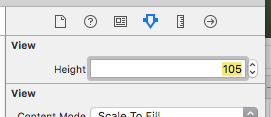Background
I am making a vertical label to use with traditional Mongolian script. Before I was just rotating a UILabel but there were some performance issues and other complications with this. Now I am working on making a label from scratch. However, I need the vertical label to tell auto layout when its height adjusts (based on string length).
What I have read
I read the Intrinsic Content Size and Views with Intrinsic Content Size documentation. These were more about how to use it, though, and not how to define it in a custom view.
Searching for "ios intrinsic content size for a custom view" only gives me
in Stack Overflow. This particular question didn't even need intrinsic content size because their view was just an assembly of standard views.
What I am trying
What I am trying is my answer below. I am adding this Q&A pair so that it won't take other people as long to find the answer as it took me with the search keywords that I used.


